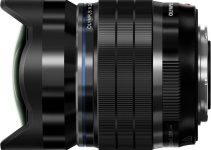Beyond any doubt, Premiere Pro CC is one of the most powerful, customizable and high-performance nonlinear editing platforms for video professionals available out there. With more than 25 years of history, the software contains a plethora of hidden features, tools, and tweaks, that could satisfy even the most demanding content creators regardless of the scope and complexity of their project.
From convenient shortcuts to discrete design decisions that can improve your daily post-production workflow, seasoned video editor Notian Sans of Learn How To Edit Stuff showcases eight extremely effective Premiere Pro CC tips and tricks that can help speed up your video editing in no time.
If you’ve ever worked with audio clips in Premiere Pro CC, you’ll know that the software typically limits duration adjustments to one frame, making it difficult to make cuts at specific moments or when you want to get the perfect audio-video syncing.
To remedy this drawback, right-click on the top of the timeline and select Show Audio Time Units. This trick will allow you to adjust the duration of your audio clip based on audio time units, rather than per video frame, thus enabling more precise audio synchronization.
Another technique explained by Sans involves moving video clips around. When repositioning video clips to different layers, it’s often too easy for editors to accidentally place their clips over an existing one – even if the Snap feature is enabled.
Instead of using the traditional drag-and-drop method of moving bits and pieces around, you can select your clip and use the Alt+Up/Down Arrow Keys instead. This alternative interaction with your footage allows you to better manage the position of your videos, helping you keep your timeline better organized.
Furthermore, Sans suggests another technique called Pancake Timeline where you can use two or more timelines simultaneously. This approach can be extremely convenient since you are using your main sequence alongside a complementary one as your clips/b-roll/selects bin.
Rather than shifting between your main and b-roll timeline, you can simply select the tab of your second timeline, holding and then dragging the tab onto the top of your existing timeline window. By doing so, you can seamlessly switch between your sequences, and you can easily transfer clips from one timeline to another.
The third technique outlined in the video refers to the use of Master Audio and Video Effects. When applying the same effect to all your video clips, it’s very common for editors to copy-paste the settings to all the videos on the timeline. However, if a parameter needs to be adjusted on the fly, the editor would then have to remove all the clip attributes and repeat the copy-paste process.
Instead of doing this tedious repetition and losing precious time, you can apply effects directly to the Master Track of the Audio and Video aspects of your sequence. This can be done by switching to the Master properties, located at the top of the Effect Controls or Lumetri Color Panel. Right under the tab of Lumetri/Effect Controls, click the button that is labeled Master*[selected clip name].
Likewise, you can do adjustments to the master audio track by going to Window > Audio Track Mixer. Inside of the mixer, click on the arrow in the top-left portion of the screen labeled Show/Hide Effects and Sends. You’ll be presented with a series of blank spaces for each track. When you apply an effect in this area, all the clips in the track will be affected, saving you even more time as you’re not required to add the same set of filters to each clip.
The next tip is not necessarily a Premiere Pro CC exclusive. In Sans’ personal setup, he takes advantage of a vertically-oriented monitor, as this makes navigating through clips bins much easier. To replicate his setup, double-click on a folder in the project bin. Then drag the bin window onto your vertical monitor and enlarge the window to fit the screen.
If you’re working on a multi-cam interview, or in a project that involves the use of many layers, this next trick may be right for you. When trying to audition clips, checking whether or not a clip would fit your edit, consider taking advantage of the enable/disable – allowing you to toggle clips on and off temporarily, without having to disable a whole track.
To use this feature, go into Edit > Keyboard Shortcuts and use the search bar to look for the Enable function and assign the feature to whatever key you want.
As a Premiere Pro editor, you may find it tricky to search up a clip that’s already being used in the timeline. To quickly find a used clip for preview in your source monitor, select the one on your timeline and press the F key. Premiere Pro CC will then open the video in the source monitor, allowing you to perform actions such as extracting different clip segments or assigning multiple in and out points.
The final trick explained by the seasoned video editor is a simple and efficient method of copy-pasting. Rather than using the typical Control-C/Control-V technique, you can alternatively click on a clip, hold down the alt key then drag the duplicate onto a different area of your timeline.
What’s your favorite trick in Premiere Pro CC? Let us know in the comments below.
[source: Learn How To Edit Stuff]
Disclaimer: As an Amazon Associate partner and participant in B&H and Adorama Affiliate programmes, we earn a small comission from each purchase made through the affiliate links listed above at no additional cost to you.



